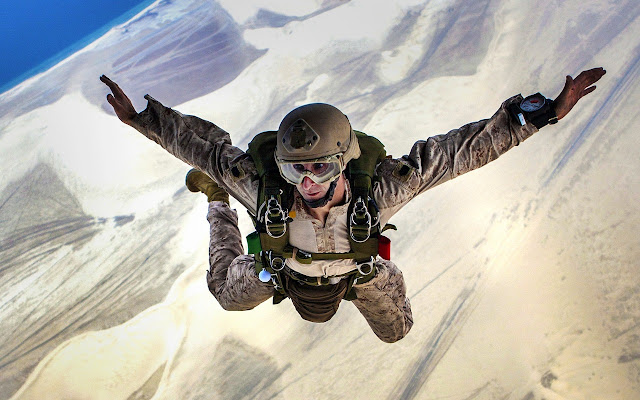Unfortunately,
skydiving is a sport governed
by the weather. Skydivers need to have an understanding of the weather –if
the weather is no good, then we cannot skydive! To gain an understanding of the
weather, we can look at forecasts, satellite pictures and other predicting
methods. The pilot will also be able to tell us what strength the winds are at
certain heights. However, no one owns a crystal ball and even the experts can
be proved wrong from time to time.During
the freefall part of the skydive we are subject to being pushed in whatever
direction the wind is going even though you may not notice it. The strength and
direction of the wind affects the run in, spotting and amount of time left
between groups on exit. Whilst under canopy we are even more subject to the
wind direction and strength and therefore we have to adjust our landing
patterns to compensate for this.
What To Do When The Weather Is Bad
Cold Weather (Warm Up, Stretch, Insulation, Thermal
Clothes)
BPA Regulations
Cloud
Rain
Wind
What To Do When The Weather Is Bad
During
the cold UK winter, you may be able to get some jumps in, but be warned as it
will be cold and therefore, it makes sense that you put on good quality
skydiving goggles that can be worn over prescription glasses. However,
there are other skydiving related activities you can do to keep busy. If you
are new to the sport then ask at the DZ about learning to pack. You will then
find that when you purchase your own equipment you will save money on packing.
Also,
for your licenses you will need to get certain briefs, e.g. jumpmaster brief,
flight line checking brief. If you are really interested in the equipment side
of parachuting you might even look into doing a rigging qualification like your
Approved packers which allows you to pack
reserve parachutes. Other alternatives are a trip to the wind tunnel, or a
skydiving trip abroad, there are many boogies in Europe over the British winter
and this is also a good way to stay current whilst experiencing new aircraft
and jumping at new DZ’s.
Cold Weather (Warm Up, Stretch, Insulation, Thermal
Clothes)
Of
course, it is possible to skydive in cold weather, however as you might expect,
you may want to wrap up to keep yourself warm. There are jumpsuit manufacturers
that specifically make thermal suits or ‘warm wear’ to wear underneath your
normal jumpsuit to keep your body warm. Some skydivers suggest wearing silk
inners inside their gloves, or even surgeons’ gloves, in order to keep their
fingers warm. It is especially important to keep your fingers warm as losing
sensation may cause you trouble when finding the toggle when it comes to pull
time.
Full
face helmets are warmer than open; however, the BPA enforces a 50-jump limit
with B License. Other alternatives are neck warmers made from fleece material.
In addition to protective clothing, you may find it beneficial to warm up and
stretch your body before skydiving. As well as improving your arch, or reducing
the risk of pulling a muscle in freefall maneuvers, this will warm your body
for the skydive.
BPA Regulations
Cloud
·
The BPA Operations manual
states the following about cloud limits:
·
“Parachutists may not leave the
aircraft if, at the point of exit, the ground between the opening point and the
intended landing area is not visible.”
·
It also states that the minimum
flight visibility must be at least 5 km.
Rain
Skydiving
in the rain or through a rain cloud is not considered a very nice experience as
it stings your face. Usually, if there are rain clouds in the sky, the wind may
also be over limits and there will not be visibility of the DZ from jump
altitude.
Wind
BPA
regulations state that the maximum ground speed limits for student skydivers is
15 knots and for intermediate and experienced skydivers the maximum is 20
knots. The BPA Operations manual also says the following:
“Suspension
of parachuting will be ordered for the designations of parachutists concerned
after two gusts above the limit have taken place within five minutes. After
parachuting has been suspended it will not be resumed for at least thirty
minutes during which time no gusts above the limit have occurred.”





0 Comments